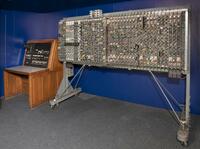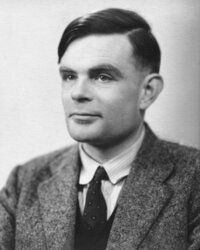Alan Turing invents the principle of the modern computer
|
30th November 1936 In 1936, while a fellow of King's College, Cambridge University, Alan Turing invents the principle of the modern computer. Turing described an abstract machine with the following components:
Despite the apparent simplicity of this machine, Turing proved that it is sufficient to calculate any algorithm, no matter how complex. Turing described his machine in a paper titled "On Computable Numbers with an Application to the Entscheidungs-problem". Turing finished and delivered his paper on 28 May 1936. The paper was read on 12 November 1936, and then published in the Proceedings of the London Mathematical Society journal in two parts: the first on 30 November 1936, and the second on 23 December 1936. The machine described in Turing's paper is now commonly known as the universal Turing machine. The concepts it describes are fundamental to all computers. Related information:
Image:
Related Items in the Collection:
|
Click on the Images For Detail
|











